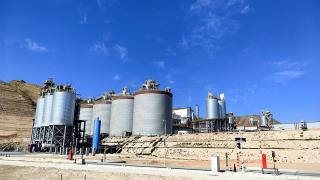Recent developments in cement and clinker trade with shifts in demand patterns have combined with an increasing availability of bulk carrier capacity to push freight rates down. Can cement producers expect this trend to continue going forward? By Levent Karaçelik, Marvel Shipping, Turkey.
As domestic demand patterns shift and fortunes of local producers change, the cement and clinker trade between countries swings from net imports to net exports and vice versa for each trading partner. For instance, the UAE used to be a net importer until 2009 when surplus capacity transformed it into a net exporter. Japan was a significant importer in the 1980s but likewise now exports cement, since the domestic market fell into a long-term decline. At the other end, Russia exported sizeable volumes of cement until 2010 after which imports became a notable feature of Russian cement supply. Spain has seen the balance swing both ways. Between 1998 and 2009 it imported rather than exported cement as was previously the case. However, since 2010, as the domestic market experienced a slump, exports have reappeared, helping local cement producers at least partly sustain capacity utilisation rates. In many cases, this trade has been supported by extensive seaborne traffic, delivering cement and clinker to overseas customers.
